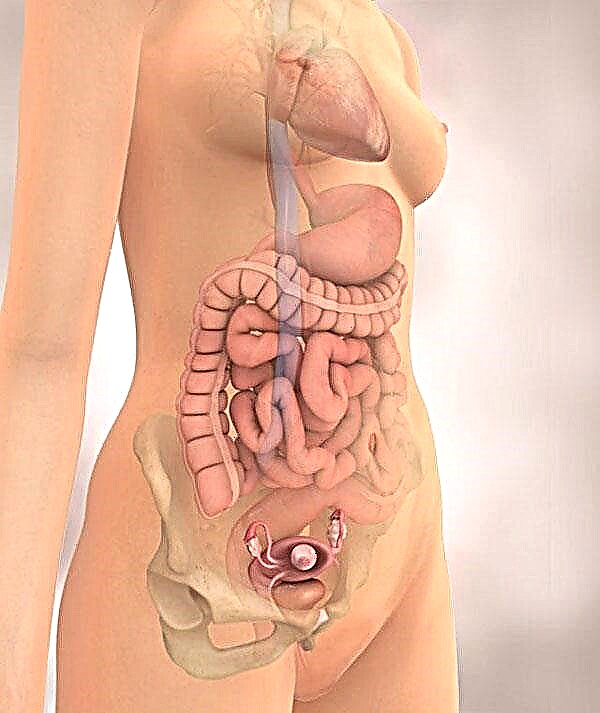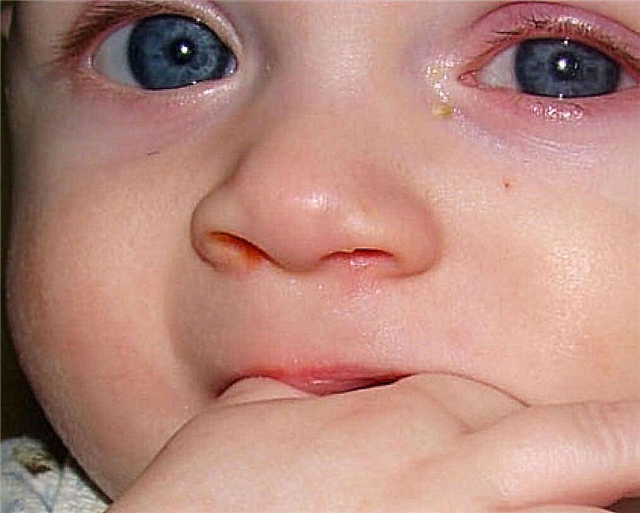Skin condition is a reflection of the health of anyone, including a baby. Therefore, having found rough spots on the body of a child, it should be immediately shown to a specialist. He will identify the cause of the problem and prescribe adequate treatment.

Rough spots on a child's face always bother parents
Reasons for the appearance of rough spots
Dry spots on a child's skin can occur for a variety of reasons. The most common are the following.
Exudative diathesis
The baby's body can respond with skin rashes to exudative diathesis. With this disease, the scalp begins to peel off first. Seborrheic scales appear on the crown of the newborn. As the disease progresses, diaper rash occurs on the body. The stomach is especially affected. The face begins to turn red, rough areas form on it.
The reasons for the development of the disease most often turn out to be an incorrectly selected mixture for artificial feeding, too early introduction of complementary foods or an individual reaction to a certain product.
Important! If the factor that triggered the development of exudative diathesis is not timely established, the disease can become chronic.
Allergic diathesis
The appearance of red rough spots on the body of a child may also be associated with allergic diathesis. Its symptom is roughness on the face, body, arms or legs of the baby. Most often, the disease is caused by the following factors:
- an allergic reaction to a product or external irritant;
- heredity;
- infection;
- some medications taken by the mother during pregnancy or breastfeeding.
There is no need to treat allergic diathesis - it is enough just to eliminate the allergen, and the symptoms will fade over time.

Diathesis is a very common childhood diagnosis
Psoriasis (scaly lichen)
An infant diagnosed with psoriasis is relatively rare in medicine. If the pathology does develop, it is more likely than in adults to be severe and cause complications. Most often, flaky dry spots on the child's skin appear against the background of reduced immunity due to a previous illness. This happens after infectious diseases, chickenpox or flu.
Psoriasis can affect any part of the body, be it the leg, arm, elbow, etc. It is imperative to seek help from a doctor when the first rashes appear. Moreover, when a baby suffers from psoriasis, additional symptoms are often observed. The child's health worsens, he begins to itch. Combing the skin, in turn, leads to injury, the formation of new foci. The risk of infection is greatly increased.
Important! In advanced cases, psoriasis can spread to the mucous membranes of the mouth or genitalia.
Roseola pink
Sometimes the appearance of dry pink spots on the skin of an infant is explained by pink roseola (sudden exanthema). The doctor does not make such a diagnosis very often in infants. We are talking about an infectious disease transmitted by air or by the fecal-oral route. Most often, the disease is caused by herpes viruses.
The most susceptible to roseola rosea are children in the age range from three months to two years. The description of the symptoms is in many ways similar to the signs of acute respiratory viral infections, only a small rash with a pink or reddish tint is added to an elevated temperature, catarrhal symptoms and weakness.

Roseola pink can cause great discomfort to crumbs.
Important! To roseola pink, immunity is developed. If a child has had her in a year, the likelihood of re-infection is incredibly small.
Contact dermatitis
If a newborn or baby has rashes on the skin in the first month of life, most often the cause is contact dermatitis. Mostly it develops when the diaper is rubbed against the delicate skin of the butt or tummy area. It can also appear if the crumbs are bathed in chlorinated water. In addition to the above, contact dermatitis can be caused by the following factors: detergents, medicines, household chemicals, cosmetic or hygiene products, poisonous plants and some metals.
When exposed to strong external agents, the disease can have four stages:
- Superficial lesion with limited redness of the skin.
- Severe lesion with the formation of blisters, the contents of which are white or colorless.
- Destruction of the skin structure with tissue death.
- The defeat of all parts of the skin and underlying layers.
Note. A baby with contact dermatitis becomes moody, eats poorly, and sleeps restlessly.
Lichens of different types
The appearance of dry crusts on the body of an infant can be explained by pityriasis, pink or white lichen. The indicated diseases have different causes of development, the severity of the course, as well as the nature of the rash.
With pityriasis versicolor, dry skin increases. As the disease progresses, the number of dry spots on the skin of the baby becomes more and more. In their structure, they strongly resemble bran. The disease often occurs when the climate changes, when the baby's body is weakened. When exposed to the sun, the affected areas of the body will remain unburned.

With pink lichen, skin rashes are very characteristic
Pink lichen occurs in older children. A nursing baby has fewer risks of getting a similar disease. It is expressed in the appearance on the body of pink oval-shaped specks with small scales in the center. No specific treatment is required for pink lichen. As a rule, after a few weeks, the rash begins to gradually fade and disappear.
Other reasons
The appearance of rough dry spots on the skin of a baby can be explained by other factors. Symptoms can develop with insect bites. Sometimes spots appear as a result of prickly heat, which is a skin irritation that begins to crumble under the influence of excessive moisture.
Increased sensitivity to sunlight, also known as photodermatitis, can also cause dry skin and blemishes. With this disease, the epidermis becomes rough to the touch, itchy rashes appear in open areas, and redness is often observed.
Differential diagnosis
If you find rough spots on the legs and arms of a baby, a child must be shown to a pediatric dermatologist to examine the skin and carry out differential diagnostics. To determine the disease, the patient will be given directions for general and biochemical blood tests.
If specialists suspect an individual intolerance to a particular irritant, an allergen test may be required. A sowing scrap is taken from the affected area. In some cases, ultrasound of the internal organs is performed.
Which doctor to contact
Many parents know that if a child has a toothache, he should be taken to the dentist, if the ear - to the otolaryngologist. Not everyone knows which doctor will help cure rough spots on the skin, since their etymology can be different.

For any rash, the baby should be shown to a dermatologist
You should start with a dermatologist. Based on the results of the diagnostics, he himself will send the little specialist to another specialist: a rheumatologist, infectious disease specialist or an allergist-immunologist.
First aid for a child
If you find that the baby's tummy, arms, legs or chin are "decorated" with rough and dry spots, this is a reason for vigilance. The first step is to assess the child's condition for the presence of additional symptoms. Self-medication is not worth it, but before a visit to the doctor, all possible allergens and external factors that could contribute to the appearance of spots should be excluded from the child's diet.
To reduce the level of discomfort, it is allowed to treat the skin of the baby with Bepanten or a moisturizing baby cream without fragrances. All other activities should be suggested by the attending physician based on the results of consultation and diagnostic examinations. The use of grandmother's recipes, such as wiping the back with miraculous herbs or using "live" healing waters, is unacceptable.

Doctors strongly advise against self-medication
What is forbidden to do
The desire of parents to rid their child of peeling is quite understandable and easily explainable. In their desire to help a child, without having the appropriate knowledge, they can cause harm. So, in no case should you find flaky spots on the child's body:
- use hormonal creams or ointments;
- pick up the resulting crusts;
- independently prescribe medications for allergies and other diseases, especially with an unspecified diagnosis.
Prevention of flaking
It is easier to prevent any disease than to cure it. In order to prevent the appearance of flaky spots, mothers are strongly recommended during the period of bearing a baby and breastfeeding:
- give up any bad habits;
- exclude possible allergens from the diet;
- include daily long walks in the daily routine;
- for artificial feeding, use exclusively high-quality mixtures from leading world manufacturers.
In addition, the following actions will help to protect the child:
- removing from the room the crumbs of all objects that can collect dust;
- minimize child's contact with pets;
- carry out wet cleaning on a daily basis;
- monitor the level of humidity in the children's room;
- bathing the baby without using soap that dries the skin;
- abandon synthetic children's clothing;
- use a hypoallergenic washing powder for washing children's clothes and linen;
- timely change baby diapers;
- do not wrap the child.
Careful attention to the state of health of an infant will help avoid many problems. If the skin nevertheless begins to peel off and become stained, a timely visit to a specialist will allow you to get rid of the disease with minimal damage and in a short time.



